Onidah - Serrania/Sierra De La Macarena
prepared by Don R. Hender | |||
"I have to believe that we have all been spoiled by the 'sickness of condensation.' That is, a one hundredth part summarizing the complexities of civilizations, land shrinkage, details of life all into but a few lines of explanation. Mormon says it is but a hundredth part, but that is but an expression to shed light on just how 'condensed' his abridment really is. And because Mormon has compiled, abridged and condensed the record down to just the 'head' or 'headlines' so to speak, readers have presumed that this factional history of the 'thread of the Nephites and of Christ's church, is all that is to be considered in plotting out such matters as to land size and even cultural groups. We have but a hand full of lines considering the 'nation of Mulek which is made to disapear into inclusion with the Nephite tread. Other than the one city of Zarahemla, the other cities of the Mulekites stand mute.It would seem that we all have stepped back and away from reality. We read a book and it tells us a story, perhaps in as many as a few dozen chapters, or even worse still we go to a movie and it tells the same story in less than 90 to a 120 minitues of a history, nations, and lands of civilizations of 1,000 years time. Yet we seem to be are sure that we have gotten the jest of the whole matter. But we haven't, we haven't even a clue. Life and all that it entails is much more than a story book or a movie about life. Even the Book of Mormon itself attempts to tell us that it is less than a 1 percent part of the whole of the matter that has been so preserved and we all but ignore that in our mappings and historical perspectives, never considering the 99% that is missing The absurdity of it seem amazing. Science and the whole of the ivory tower also suffers from it. Sure science speaks in terms of hundreds of thousands, millions and even in billions of years, which is but mega-microism. But that is just the point. By doing what they do, they've just shook the life out of the matter. Somewhere we need to take the time and the extended thought process to truly consider just what is and is not true to life. There needs to be a 'reality shock' of some type before we come to terms with what is the whole of reality and what is a summarized abridgment of the whole of it. Onidah and 'the place of arms' gives us just that very opportunity to feel the reality of life, bring it back out of the highly condensed abridge story of the Book of Mormon and understand it for what it is. Just maybe equating what is going on today in the National Park De la Macarena with the Book of Mormon's two verse exposure to a place called Onidah can do that if one is open enough to allow it." ~ drh |
The Rainbow's End
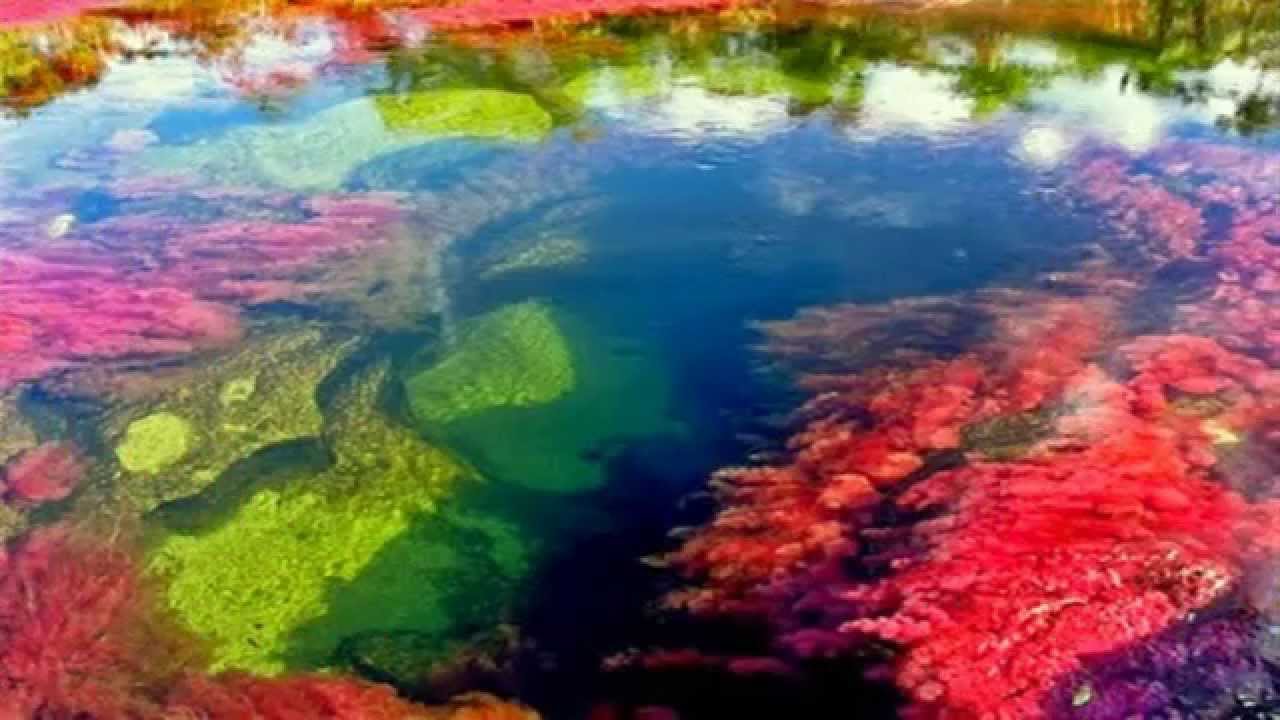
It has been argued that the limited Book of Mormon geographical model suffers from not properly reconstituing the highly condensed abridged Book of Mormon record. Here is one example. What is simply called in the Book of Mormon in one place the 'hill of Onidah' (Alma 32:4) and in another place Onidah, the 'place of arms' (Alma 47:5), is actually the same place of a great size 'such as Yellowstone National Park and Grand Teton National Park is.' The land of Onidah that has a prominant mountain-hill of a Mountain range, a part of which contains a 'mount' named Antipas, and their adjoining land, range, and forests of Onidah is of such 'National Park' size within the Regional Provincial Land or 'State' of Antionum.
Now the first reference to Onidah can be quite misleading in that it implies that Onidah is but a single little hill where Alma addresses a great multitude, many of whom were the poor of the people of Antionum, who had come out from the city or cities of the lands of Zoramites to hear Alma speak. Well there is the 'hill of Onidah' and the 'hill of Cumorah' but both are actually an entire land area of Cumorah in its particular case, and of Onidah in its case. When one comes to understand exactly what and where Odidah was, as we do have some such reality perspect of the 'land of Cumorah,' it will suddenly give a great size and diminsion to the land, people, and the geography of the land of Onidah within the even greater land/state/province (southeastern sector of the Nation of Zarahemla) of Antionum. It truly was a great land of great size — Antionum and Onidah within that.
And when Antionum fell away to the Lamanites, including the mountian range 'national park' of Onidah, the nation of Zarahemla lost a great portion or about one seventh or one sixth or even the southeastern quarter of the national lands of the greater Nation of Zarahemla. And when Odidah is spoken of again as the 'place of arms,' many consider that it could not be the same 'little hill' where Alma taught. This is even though the Book of Mormon never states that it is a different place. And even then we do not fully recognize the vast size of the land and what all that Antionum included being just one of the 'Seven Churches' regional church centers and the provincial sized lands, like as Canada has, and as the Nation of Zarahemla had.
When the people of Antionum joined the Lamanites, of course 'they seceded from the nation of Zarahemla to the nation of Nephi,' lock, stock, barrel and all of their homes, cities and lands geographically. This is what Alma could see as possibly happening and why he was attempting to preach the gospel of Jesus Christ to them and reign them back into the Nation of Zarahemla and the true religion of Jesus Christ of the Nephites.
Now, many who quick read the Book of Mormon, even with the many times they have done the same, just do not understand this type of secession and division within the Nation of Zarahemla that was taking place. But when one considered the Civil War of the South and the North in the United States, and that the Southeastern Sector of the 'deep south' was happenig and they certainly were taking all of their lands with them and not just moving down into Mexico, then a greater reality ought to set in concerning the nature of the secession of Antionum from the Nation of Zarahemla when they joined themselves to the Lamanites and their Nation of Nephi.
And even when the joint army of the Zoramites and the Lamanites, (say the forces of the 'deep south' combined with Mexico), came against Captain Moroni's Nephites, it was not happening down in the Nation of the Lamanites, named Nephi. It wasn't even in the southeast lands of Antionum! It was right up upon the northern border of Antionum, between Antionum and Jershon to their north. The entire land of Antionum was confiderate with the land of Nephi of the Lamanites. It had seceded land, stock and barrel to become a part of the Lamanited nation. They had not just moved themselves to 'Mexico' of to the National lands of the Lamanites. They had stayed at home and joined their lands and homes to the lands of the Lamanites, making the Lamanited nation greater as to both the number of people and also in the lands of Antionum which the Zoramites has added to the Land and Nation of Nehph, which was that of the Lamanites or so termed by the Book of Mormon's myopic highly abridged perspective. And the 'hill' or land of Onidah went with the lands of that newly formed nation of Zoramites and Lamanites.
The Place of Arms
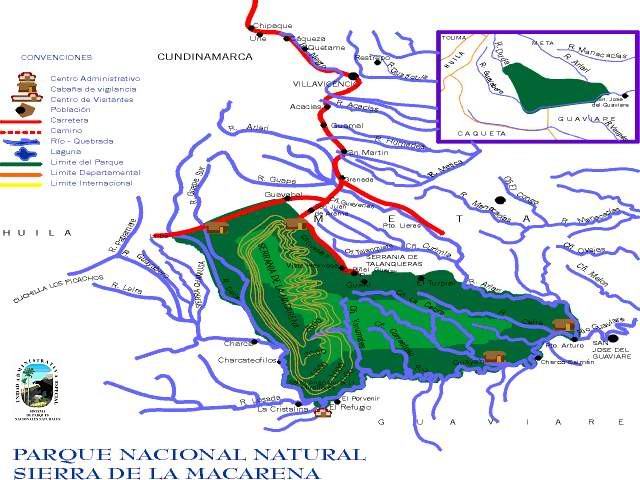 And as for the 'place of arms' being in the same local as the Onidah of Alma (Alma 32:4),
considering that Alma only spoke from 'the hill of Odidah,' that is one location upon the 'hillside'
of that mountian range of Onidah of the land of Onidah, and that in all reality the whole of Onidah was
'a great and vast strong hold' to any who wished to flee to it and secure themselves
'within' Onidah that secure land of arms, not just a storage shed of weapons, but a refuge and retreat
to which a sizable people of the Lamanites could take refuge for an extended time of conflict.
And as for the 'place of arms' being in the same local as the Onidah of Alma (Alma 32:4),
considering that Alma only spoke from 'the hill of Odidah,' that is one location upon the 'hillside'
of that mountian range of Onidah of the land of Onidah, and that in all reality the whole of Onidah was
'a great and vast strong hold' to any who wished to flee to it and secure themselves
'within' Onidah that secure land of arms, not just a storage shed of weapons, but a refuge and retreat
to which a sizable people of the Lamanites could take refuge for an extended time of conflict.
Perhaps the best place to gain this appreciation is in reading concerning the modern day activities in that same location that is today called Serrania De la Macarena. When one begins to read and understand that today, the Serrania De la Macrena is being used by the rebel forces and the drug lords of Columbia where they grow their drug crops to sell, and this is their 'place of arms' in the same way the fleeing troops of the people of the Lamanites did take refuge there. Onidah is not one little hill to live in and defend themselves within, but it is in a vast mountain range and forested eco-system of a highly defensible nature that they could really truely subsist in. (see Serrania De le Macarena article)
With the defensive position that the National Park De la Macarena offers, it becomes quite easy to see why the Lamanites who had fled to the 'place of arms' were not ever attacked but had to be strategically removed by subterfuge on the part of Amalickiah. Amalickiah had the whole of the King's army under his command. Yet his approach to Lehonti's Lamanite Nationals who 'refused' to fight, headquarted on Mount/Mountian Antipas, would not be attacked by Amalickiah. That would have been disastrous and time consuming for Amalickiah to attempt. Rather he devised a strategy against the 'sock-in' and well defended Lamanite Nationals Army of people under Lehonti.
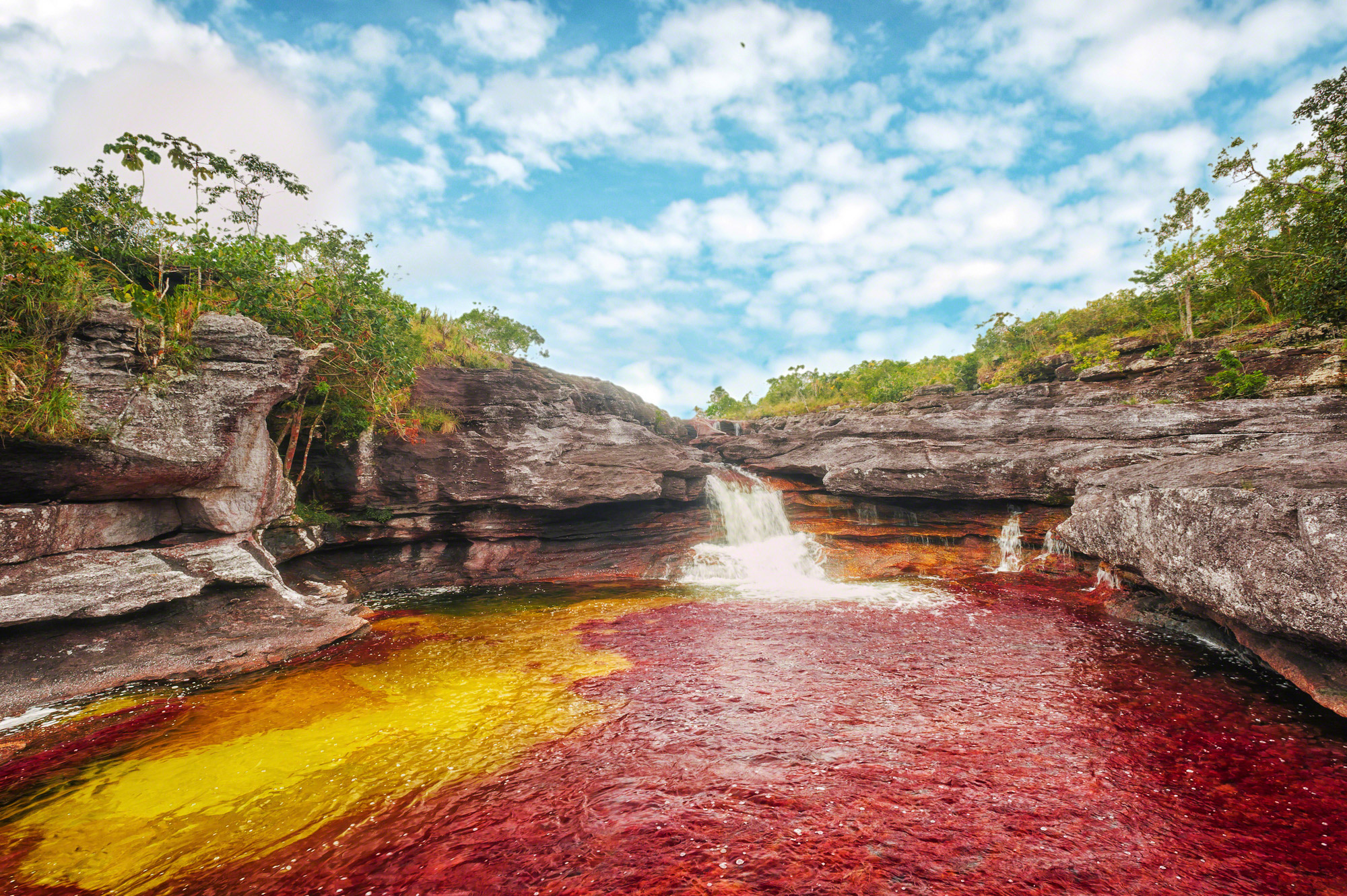
The Logic of Onidah
Now when those Lamanites refused the Lamanite King, to go and fight the Nephites again, they had good reasons for not wanting to so do it. 1) Many of them had taken an oath with Moroni and Lehi that they would not return to fight against the Nephites again. 2) And the oath was reinforced by the decisive defeat that they had suffered at the hands of Captain Moroni and Lehi in that war in the upper valley region of the land of Manti. So basically they feared to go up to battle against the Nephites, Moroni and Lehi and their God.
And they were not just withdrawing to Fort Apache or the Alamo to wait to defend it against the king's army. They fully intended to continue to live day in and day out, with their families in a place so selected where they could easily defend it against intrusion and also continue to live in it because it was large enough that it had its own self reliant and self supporting eco-system that allowed them to have every expectation of being able to live there. They had no worry of a prolonged seige against them for they could hold out much longer than the king could support any standing army against them. It also was that same logic that the Gadianton robbers would employ in their 'mountian retreats' of sustaining themselves.
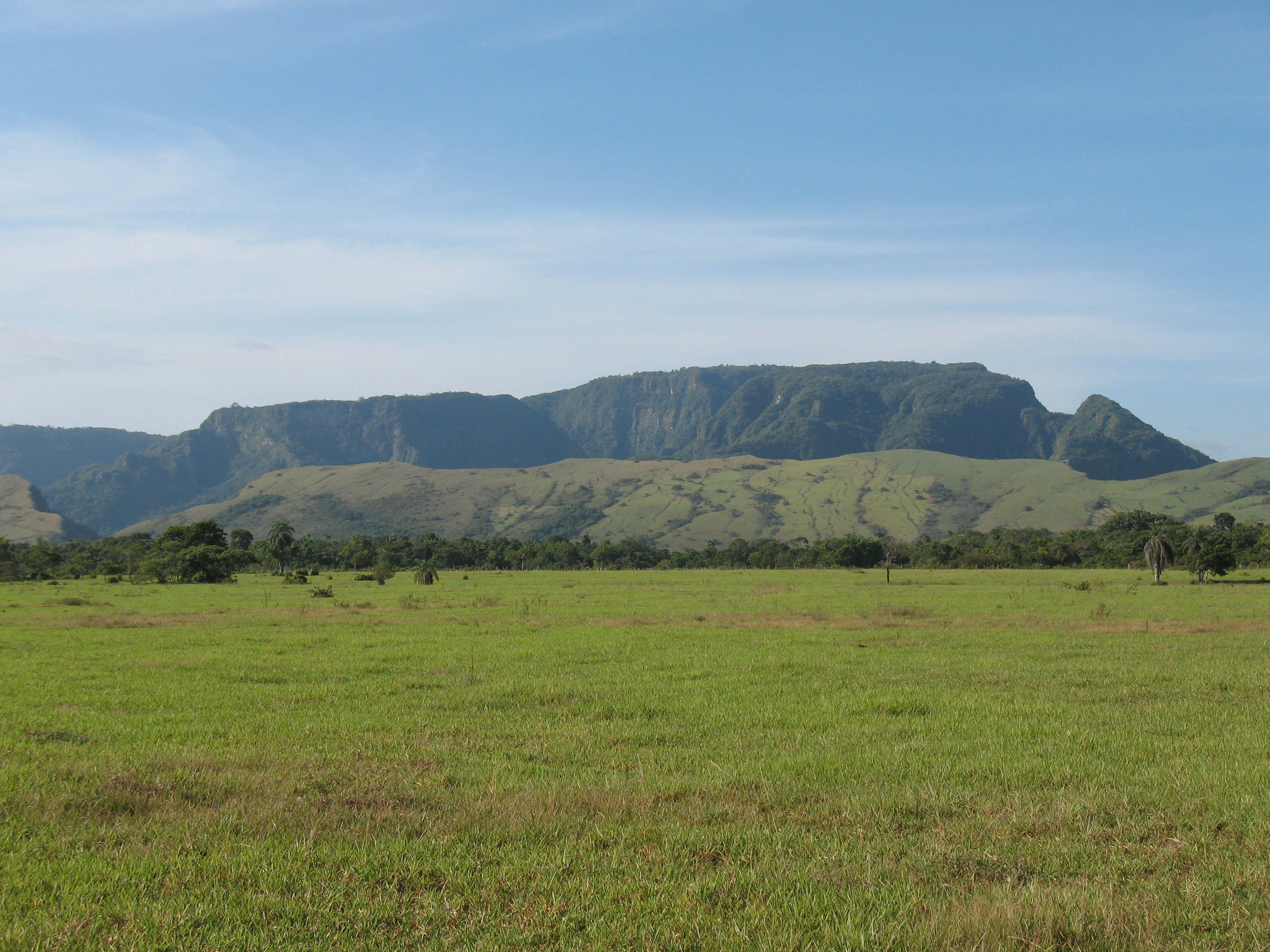 So when Amalickiah came, having been made the King's military leader, he had no real intentions
of giving them battle as he had promised the King. He had been informed of where their operation
center was at, on 'mount Antipas*' of the Onidah range, so he sent emissaries unto the leader
of the peace desiring Lamanites who had determined not to go to battle against the Nephites.
So when Amalickiah came, having been made the King's military leader, he had no real intentions
of giving them battle as he had promised the King. He had been informed of where their operation
center was at, on 'mount Antipas*' of the Onidah range, so he sent emissaries unto the leader
of the peace desiring Lamanites who had determined not to go to battle against the Nephites.
As to the image here, I like to think or imagine the 'foothill' in for foreground as being the 'hill of Onidah' where upon the side of Alma taught the people of Antionum. And that the mountain range (Sierra De la Macarena) in the background is the mountains of the Land of Onidah, 'the place of arms,' with the prominant but a bit shorter looking 'peak' at the right of the picture as that as being mount Antipas, the headquarters of the Lamanite resisters led by Lehonti (Alma 47:5-10). Click on the picture for a larger view and imagine the greater lands that lay behind and within the defendable and livable complex of Lehonti's chosen refuge retreat of the 'place of arms.'
When taken together, there was just one Onidah, not two. The Zoramite land of Antionum fell to, that is joined itself with the Lamanite Nation called Nephi. When Alma taught upon the hill of Onidah, that was just the prominant foot hill of Onidah. When the descenting Lamanites fled to Onidah they intended to occupy the whole of the Sierra de la Macarena complex of which the mountian peak of Antipas was just one obvious site pertaining to the entire range. The 'rainbow' river pictures are of 'one' of the rivers which resides in the Sierra de la Macarena National Park complex today. Anyone constructing a viable Book of Mormon map needs to locate 'Onidah' and its mountain range and peaks and connected forest lands and such. And it will not be some simple little hill. It had to have living space and resources to sustain a great part of the people, their families, who were of the Lamanite nation who descented and would not fight the Nephites — at least at that juncture in time. I've suggested where I consider Onidah to have been. Let the other mappers identify and logically present and support theirs. It is certainly a sizable land and place on the Book of Mormon map, and not just a little hill or a walled in single defensive military fort.
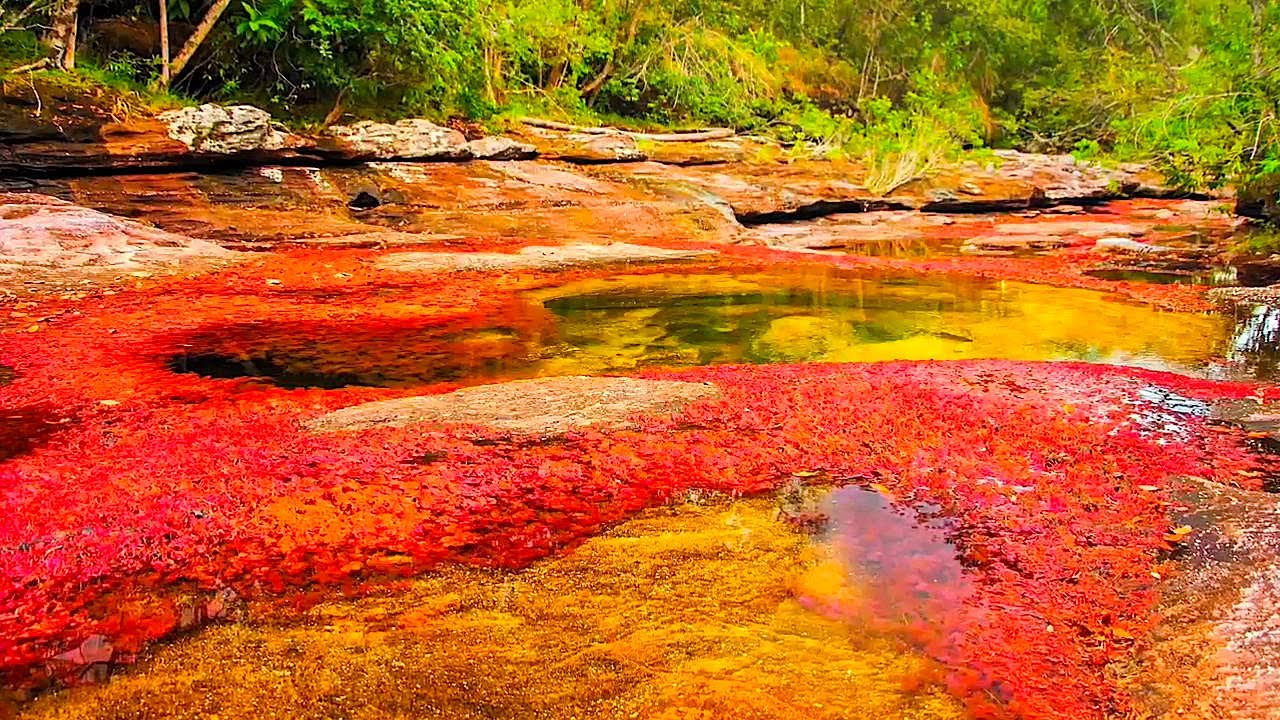
* Antipas: The name 'Antipas' is said to mean standing 'for' or 'against' a cause for a higher cause. In another word, it is 'inspiring' others in a highter cause. In the case of Lehonti and the descenting Lamanites their 'higher cause' would have been not to go against their oath of peace in going up against the Nephites to war. Yet they were not cowards, for they were willing to stand and fight their Lamanite brethren rather than to break their oaths and fight against the Nephites.
Also 'Antipas' is a common 'Greek' name and obviously not a Nephite word-name. It must be considered that some names in the Book of Mormon are of the nature of 'Phonetic translations' of the actual Nephite words without any further meaning unless given. Others on the other hand would be actually words that have a 'decided meaning' and the only way to translate that meaning into 'English,' which English language consists of words from many languages including all the words in the Bible. So Joseph Smith would draw on the mixture of language words that where in 'English' and he would understandably use such a name or word that would have had such same meaning as the Nephite word meant in his translation. Translators of languages do the same! In this case Antipas, the name given to the mount of Onidah, meant the willingness to stand for one's conviction even if it meant dying for that conviction. Thus in this case the name fits the situation in its 'Scriptural Meaning' and is therefore considered as a translation of a Nephite word which meant the same as the Greek word 'antipas,' which was and is in the English Bible for the Prophet Joseph to be inspired to draw upon.
It would seem that these Lamanites, who refused to go and fight the Nephites, would will be those of Zerahemnah's army who had sworn their sacred oaths to captain Moroni that they would never again come to fight the Nephites. What higher cause than to keep one's honor of their 'word of honor', their very sacred sworn word of honor?
Further, as some words have more than one meaning or further meanings. "Antipas" was a common Greek name also having an other further meaning "in place of father" which has been interpreted as representing all who witnessed or died for their faith during the time of the early church when the faithful ones witnessed (sometimes by dying) against the increasing influence of Satan on the doctrines of the church. The call of 'Antipas' was to hold to the faith of the previous generation who had lived by the pure teachings of Jesus. According to one Bible student, the Apostle Paul may be represented by the name, "Anitpas." So then, just what were the decenting Lamanites willing to stand against and die for? It was likely for the 'covenant of their word.'
Further, with the exact name meaning 'in place of father', one must further consider the meaning of the word in terms of the mission of Jesus Christ/Jehovah, who was placed in the stead of the father in all things (Lev. 16:32). And thus even Alma's and other Christian teaching of Christ may have influenced the name of the mount of Onidah to have been 'in place of the father' and so translated by Joseph Smith as the word/name Antipas. Other such 'foriegn' words also appear in the Book of Mormon that certainly must have been 'meaning translations' from the Nephites words and NOT merely Phonetic renderings. For example the word Adieu as used by Jacob in parting (Jacob 7:27). Now Jacob did not speak French and certainly did not say phonetically 'adieu,' but the nearest available word meaning to that which Jacob stated was 'adieu', which is a somber word of parting in the French and the 'mixed language of English' and not just 'bye'. So the fuller meaning of what Jacob said was not just 'good bye' but it was 'adieu'. In fact 'adieu' has an enlarged word meaning similar to the 'Hymn' phrase 'until we meet again' at Jesus feet. So if some one says adieu, they are really says 'good bye and until we meet again' and not just a simple 'bye'. And thus it is with the word 'Antipas'. It has greater relationary meanings in the word meaning than just being a name. And those word meanings fit well with what was going on at the 'place of arms' Onidah.
Onidah or Onida in the American Indian language means 'one desired or beloved' or 'the one sought out or searched for', which also could have implications to Jesus Christ. Certainly with the colorful river of Onidah and its surroundings, they could certainly been sought out and beloved.
So it would seem that in the names associated with this place of retreat there is an underlying Christian message in its two names of Onidah and Antipas. And that is not surprising as the Book of Mormon is Another Witness of Jesus Christ, of whom these words and the Book of Mormon do stand and bear witness to.
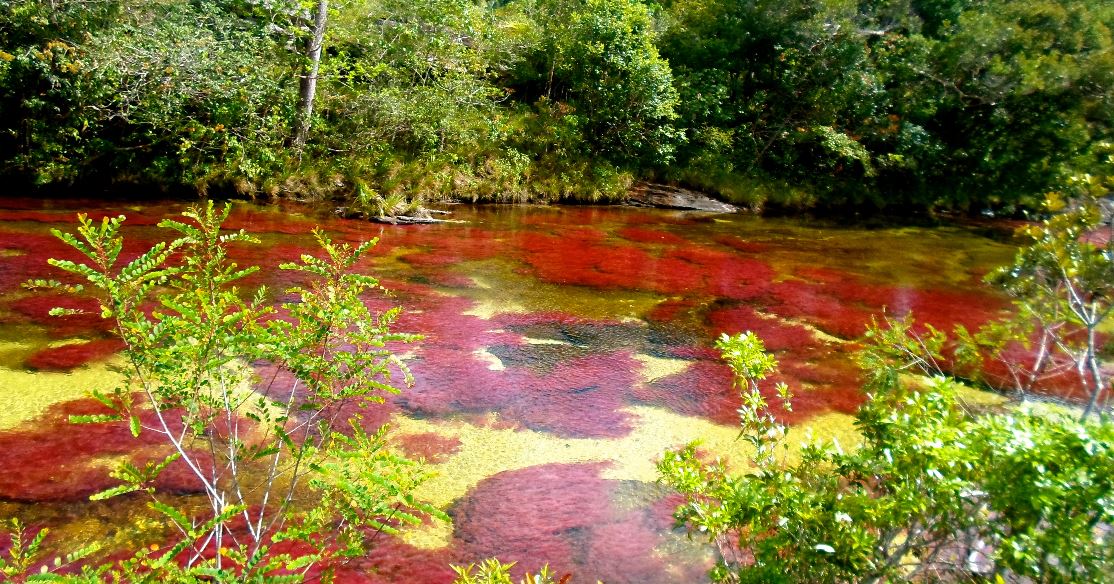
Onidah River ~ Cano Cristales: located in National Park de la Macarena of Sierra de la Macarena ~ Onidah
For Those that Are into Maps of the
National Lands of Zarahamela with Odidah Included
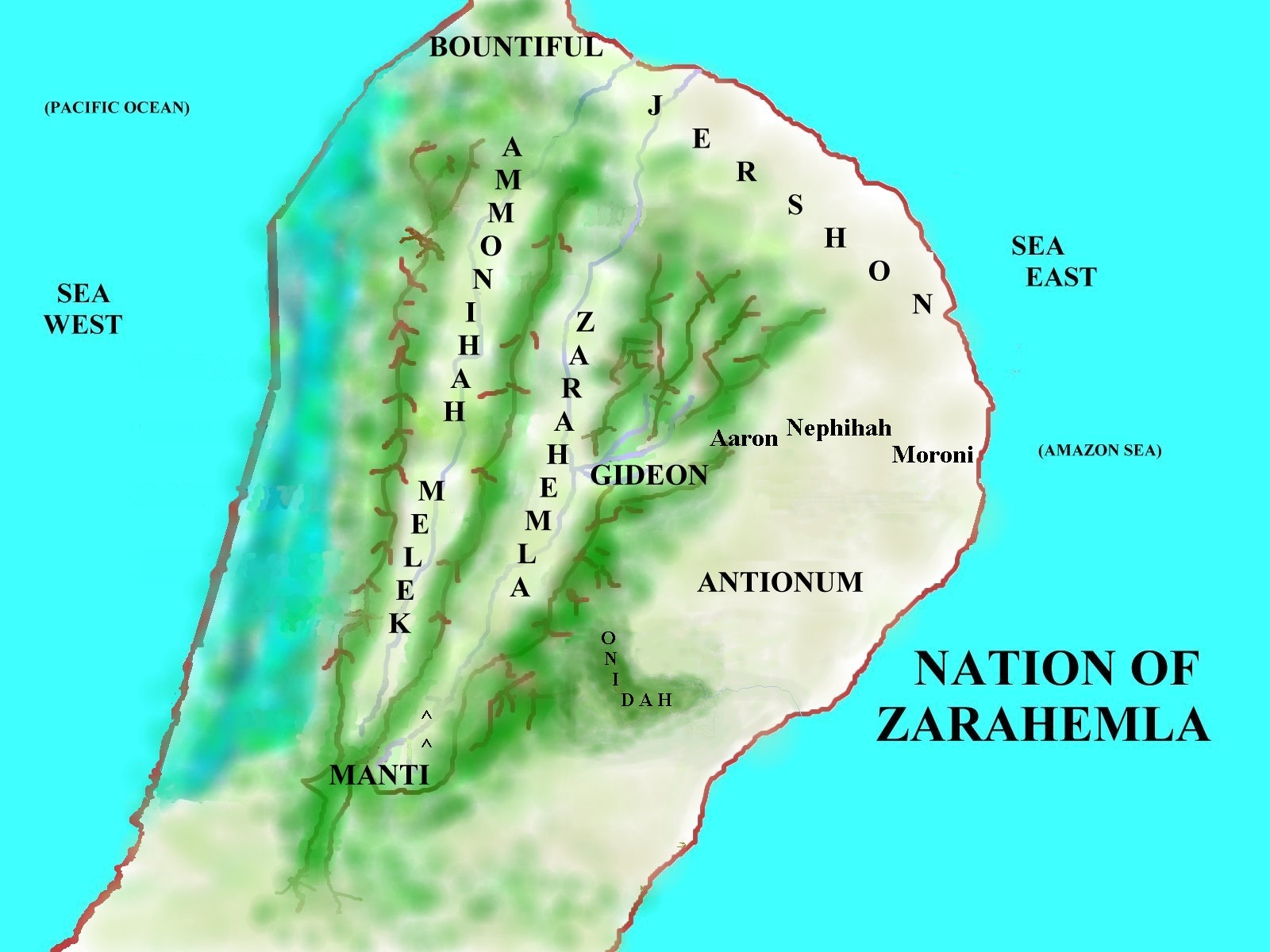 This rough map suggests a suitable placement for Onidah,
that is the hill of Odidah, the mountain range and lands of Onidah with its adjoining forest,
which would be that 'place of arms' retreated to by those Lamanites who refused to take up
arms against the Nephites due to the oath they had taken with Moroni and Lehi and perhaps
further to the fear of them concerning the battle they had had with them as a part of the
joint Zoramite and Lamanite armies in the great battle round and about Manti and its land.
(See Alma 43 & 44)
This rough map suggests a suitable placement for Onidah,
that is the hill of Odidah, the mountain range and lands of Onidah with its adjoining forest,
which would be that 'place of arms' retreated to by those Lamanites who refused to take up
arms against the Nephites due to the oath they had taken with Moroni and Lehi and perhaps
further to the fear of them concerning the battle they had had with them as a part of the
joint Zoramite and Lamanite armies in the great battle round and about Manti and its land.
(See Alma 43 & 44)
Notice the map shows the 'line of defense' that Captain Moroni protected and which would later be made up of and supported by the defensive cities of Aaron, Nehpihah upon the plains of Nephihah, and Moroni upon the sea coast. That line was from the foot of the Oriental or eastern Cordillera to the Sea East (Amazon Sea) between the borders of the land of Jershon and Antionum, which Antionum had fallen away to the Lamanites and was there after a part of the land of Nephi. Onidah's dominant preceding foothill was that where on Alma taught the great audience of Zoramites who had come out of the cities and villages of Antionum to hear him preach, perhaps because he had been expelled from lawfully preaching in the cities. As set out in this article, Onidah or the 'place of arms', which was a self contained eco-system, is equated to being roughly that mountain range of Sierra de la Macarena and its rain forest 'jungle' that makes up what is today the National Park of Macarena or of Sierra de la Macarena. The Cano Cristales river resides within the 'rain forest jungle' and must be hiked into to be found from the town of Macarena. As mentioned in the article, the remote lands of the Sierra de la Macarena of the national park has housed the 'homesteaders, rebels and guerilla forces who grow coca plants (drugs) and hide out and combat the regular Colombian government and its police and army forces.
It is considered that after Moroni first defended against the combined Zoramite and Lamanite army who withdrew from his initial line of defense on the border between the lands of Jershon and Antionum, that combined Lamanite army determined to next attempt to attack the Nephites of the land of Manti. Moroni detected their intent and is considered to have taken the 'short-cut' through the plateau and valley of and from Bogata through that east-west valley of Gideon into the Sidon or Magadalena valley and thence south to Manti. The Lamanite army's route was southeast 'round and about' the mountain range of Sierra de la Macarena or Onidah and its forested rain jungle and then back west to and through the upper Oriental/eastern Cordillera by which they passed into the trap set by the armies of Moroni and Lehi there in the upper valley of the land of Manti.
Note: Mount Antipas, where Lehonti's headquarters were located, was but one of the mountain peaks of the Onidah range or of the Sierra de la Macarena Range of mountains. That fact alone is evidence that the 'place of arms' was not just some small defensive 'fort' like placement to protect (Alma 47:5-10). Just because Onidah was only mentioned twice in the Book of Mormon does not mean that it was a small insignificant sized land area consisting of a single hill. Neither was the land of Cumorah confined to the single prominent hill of Cumorah.